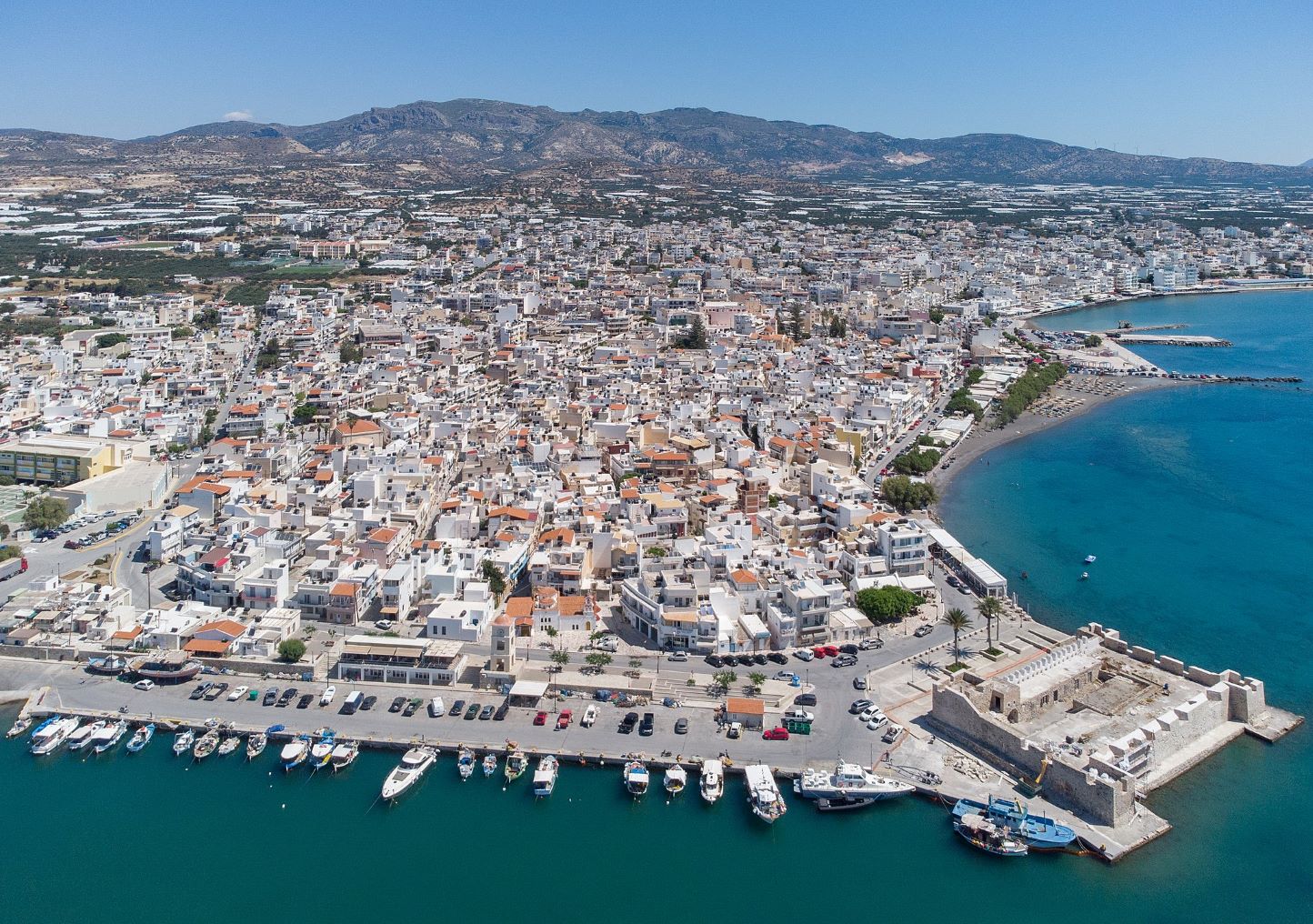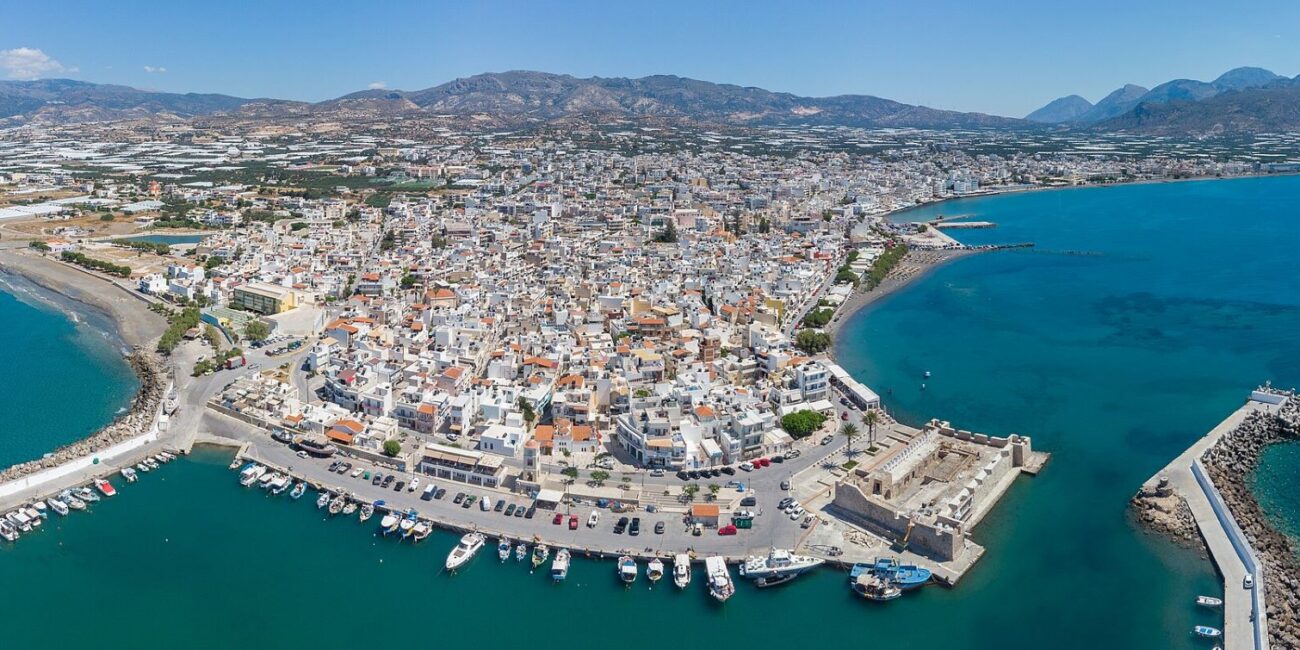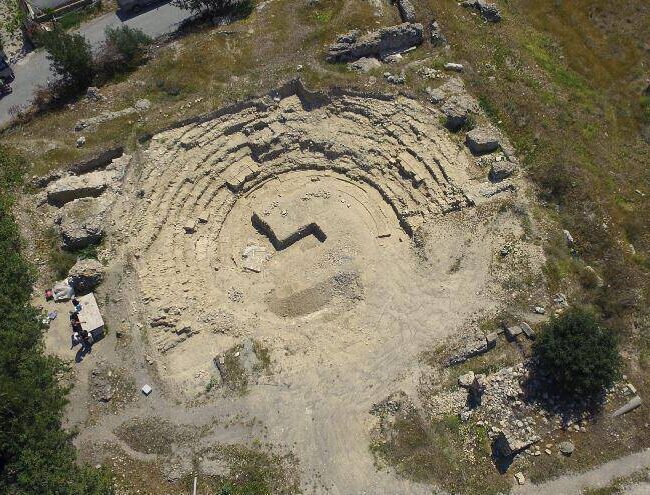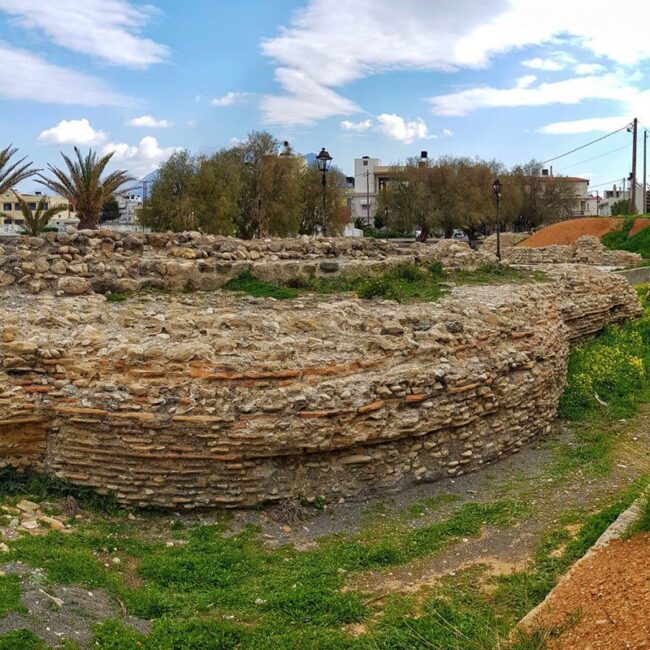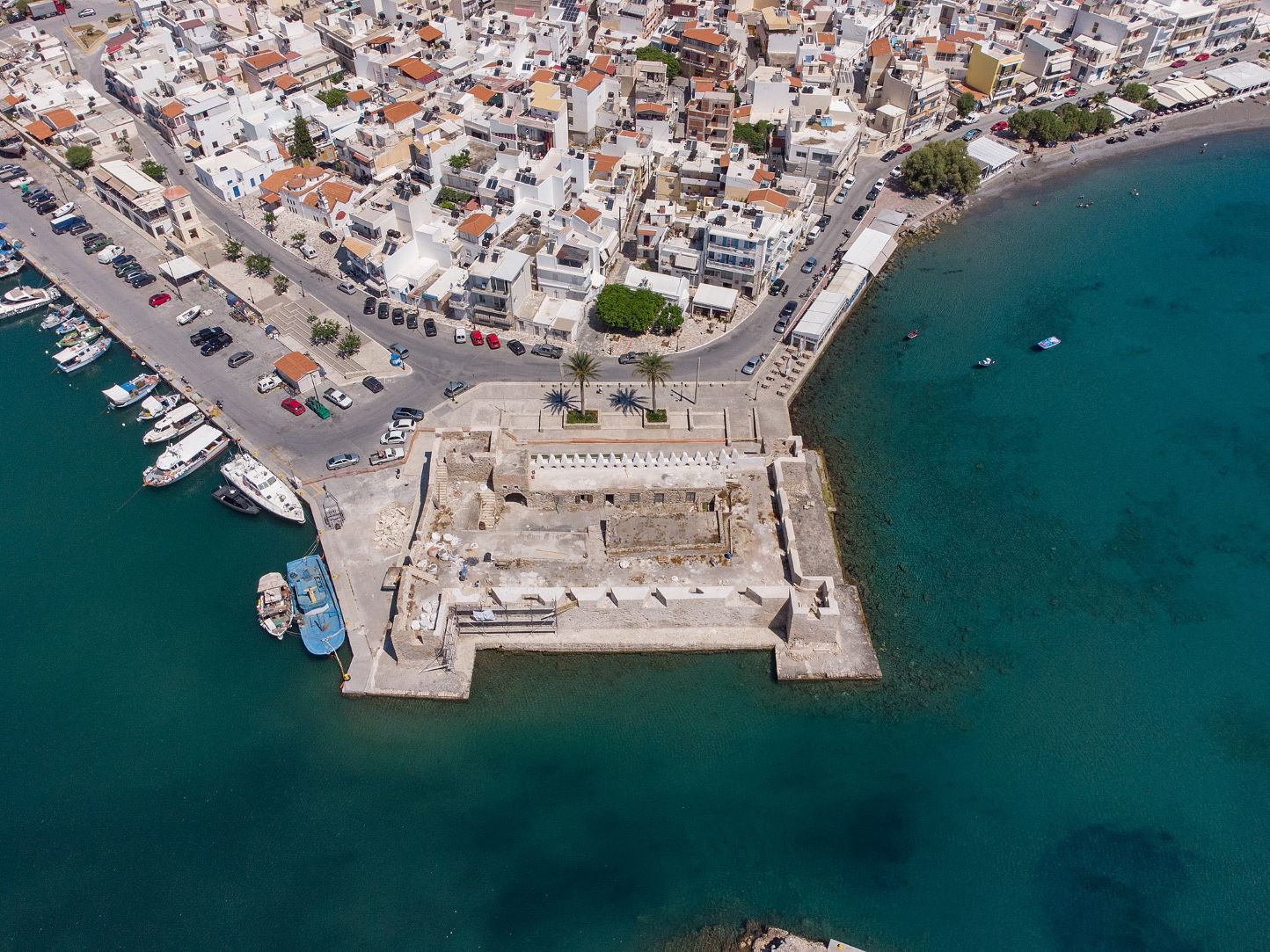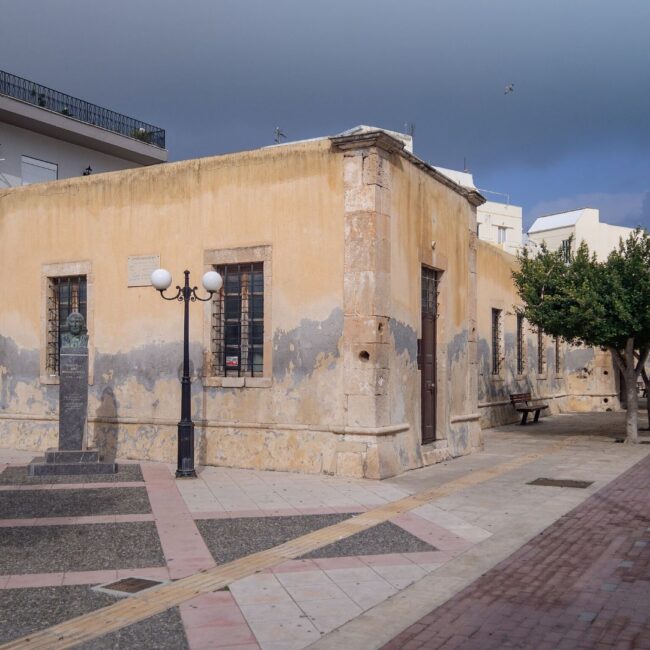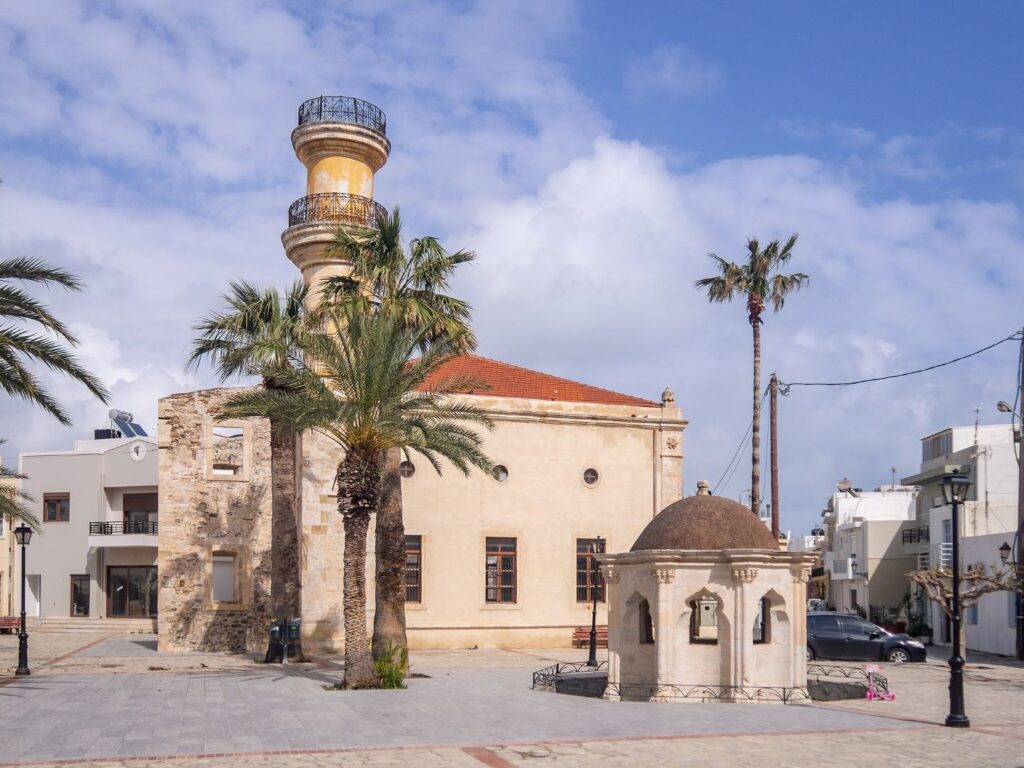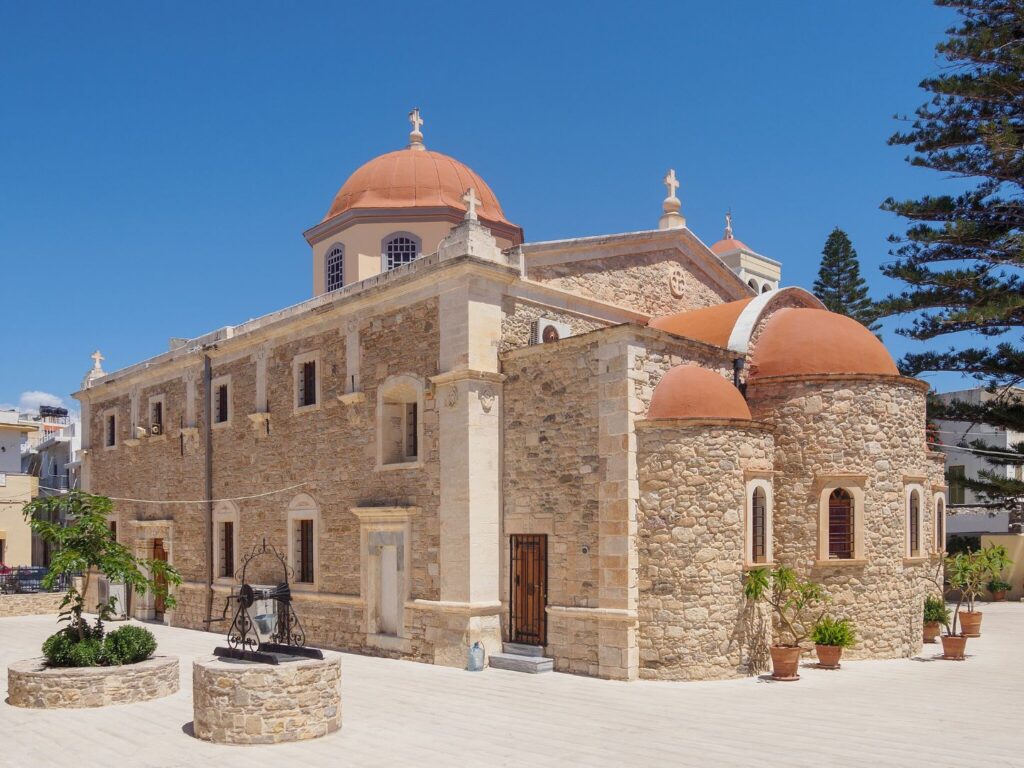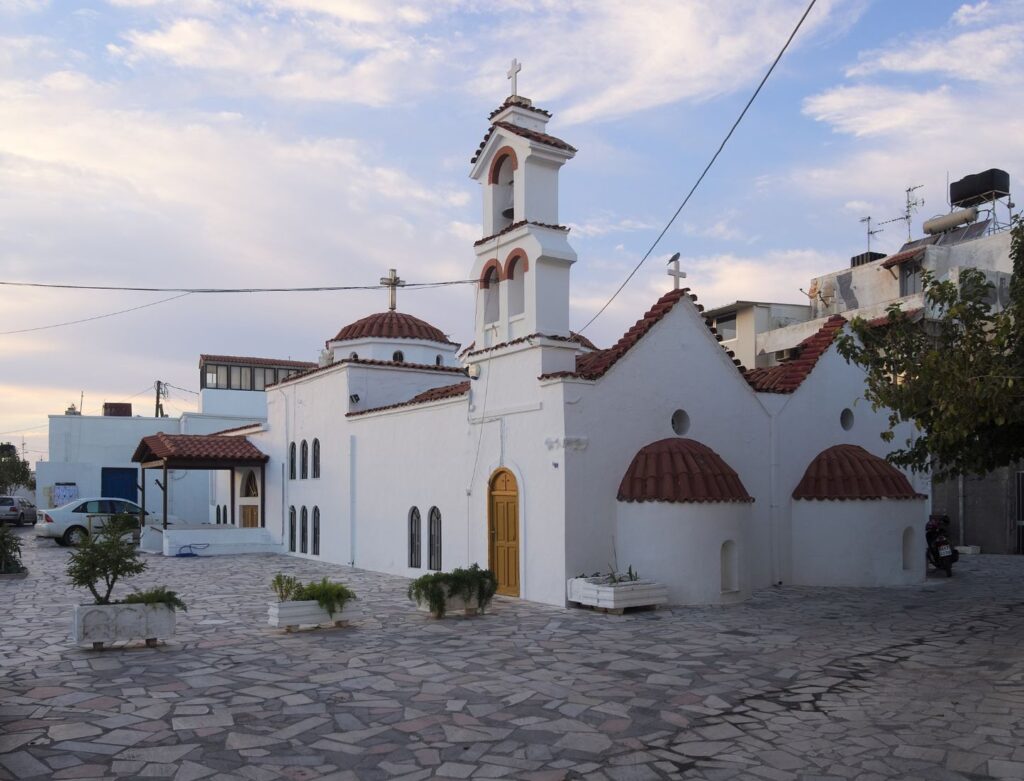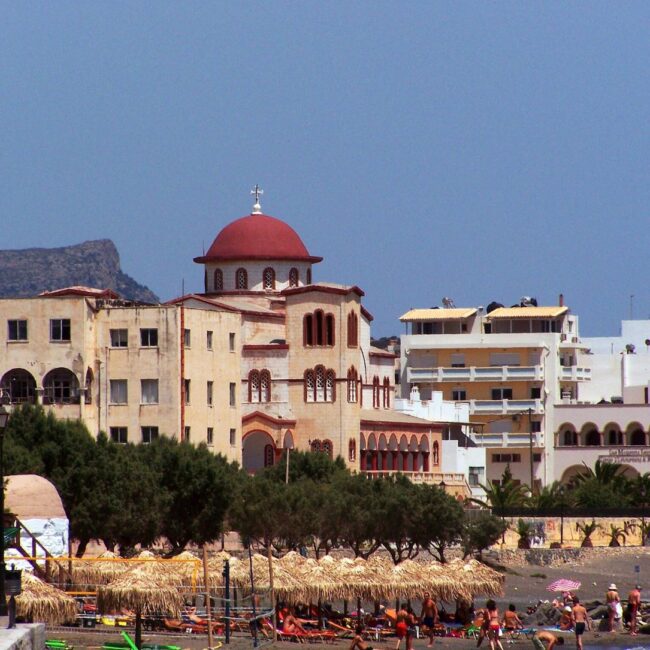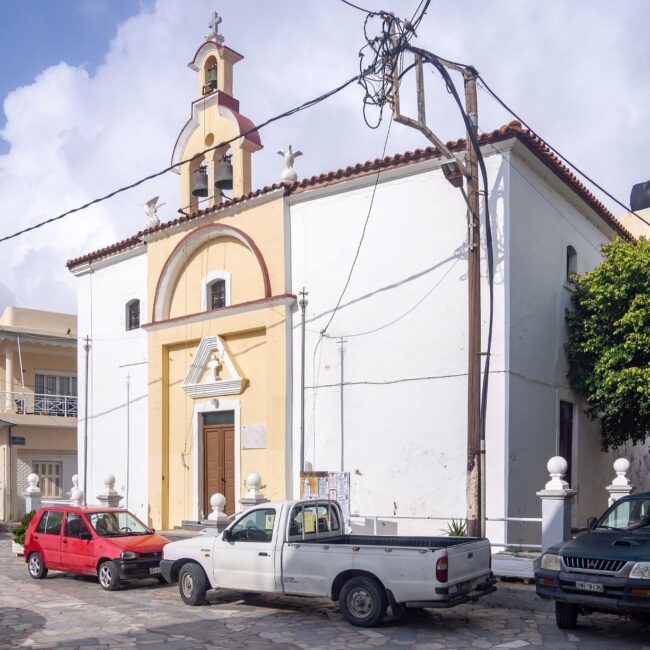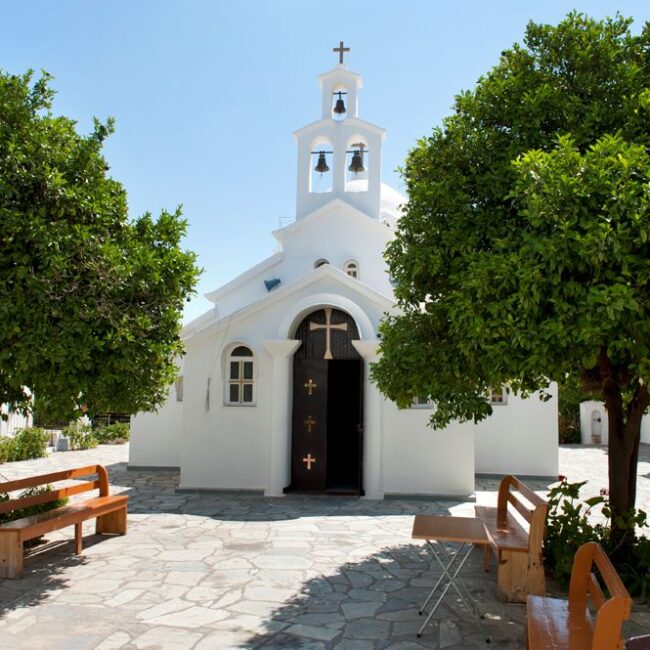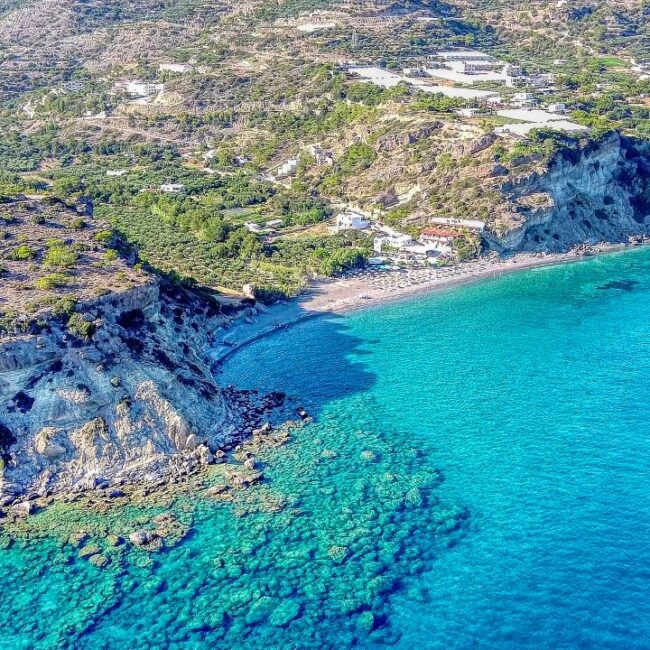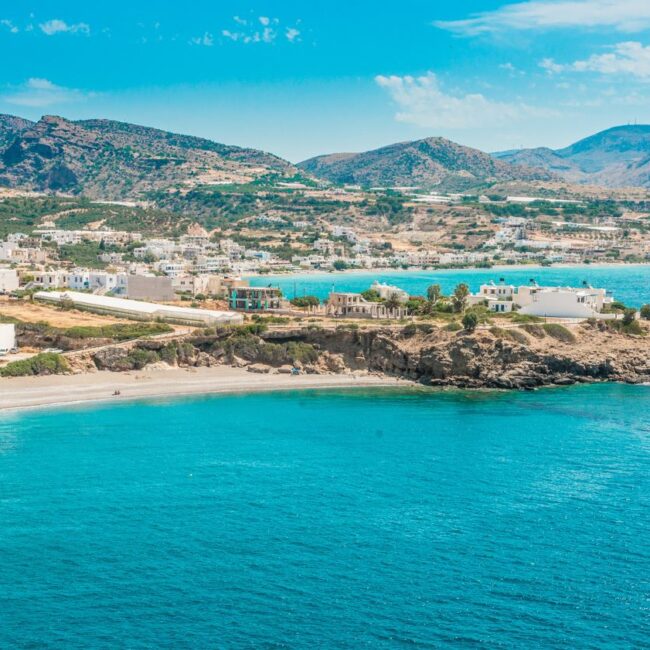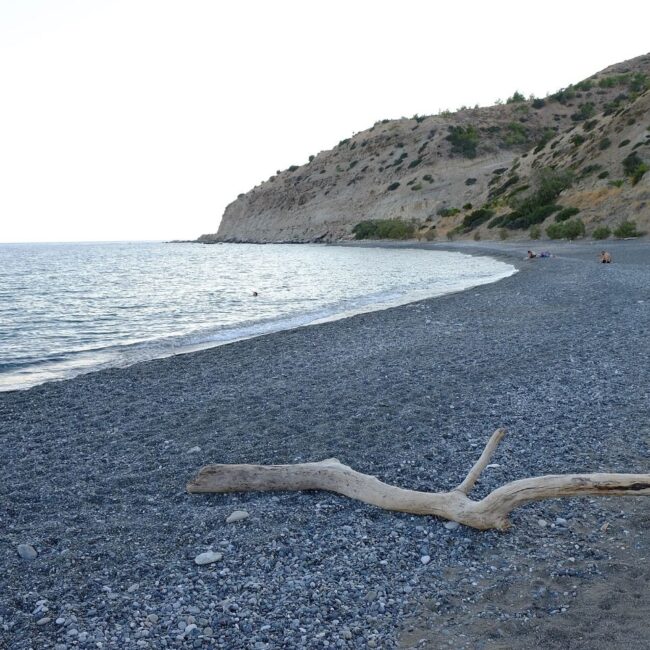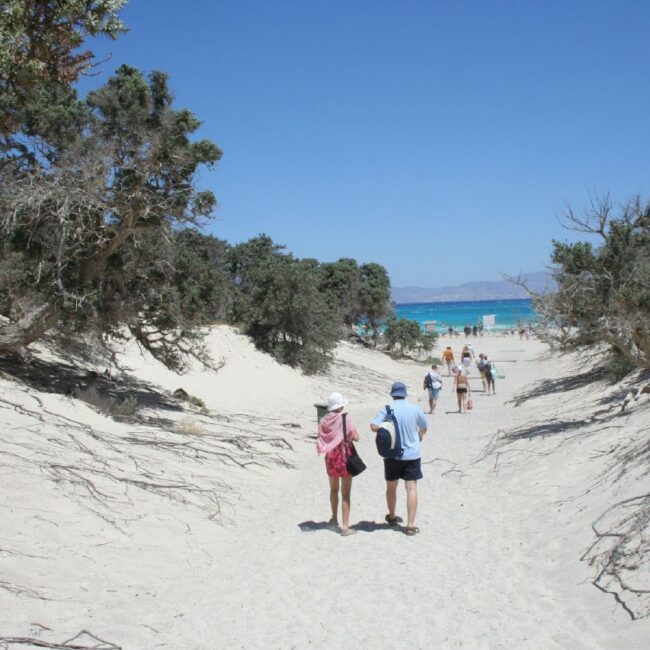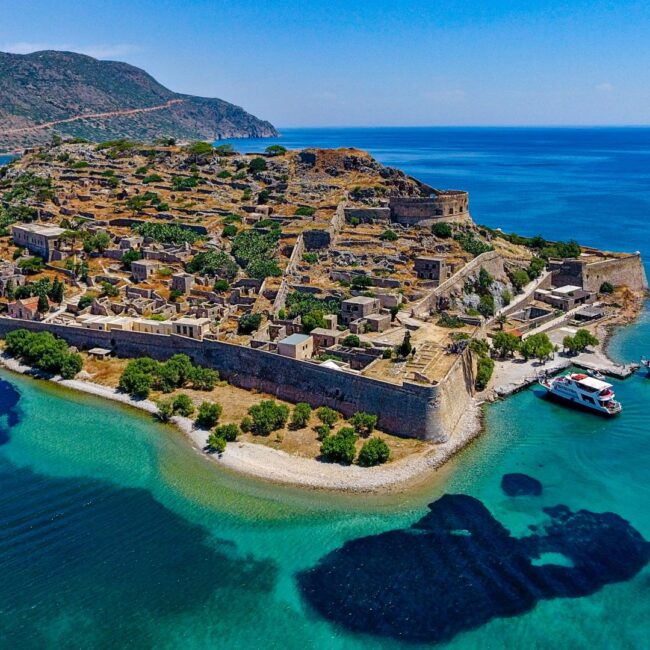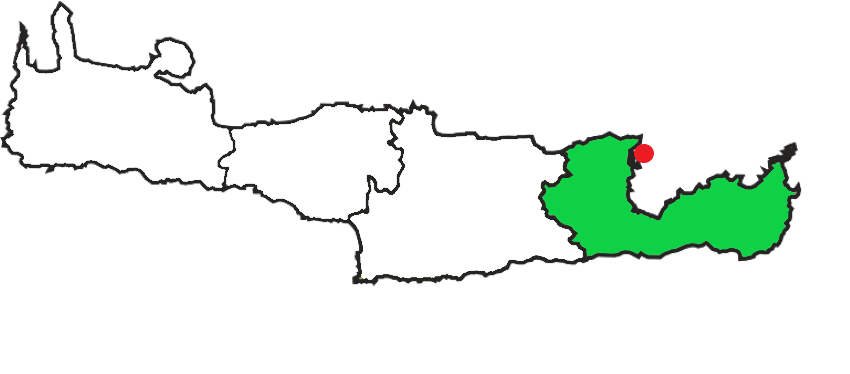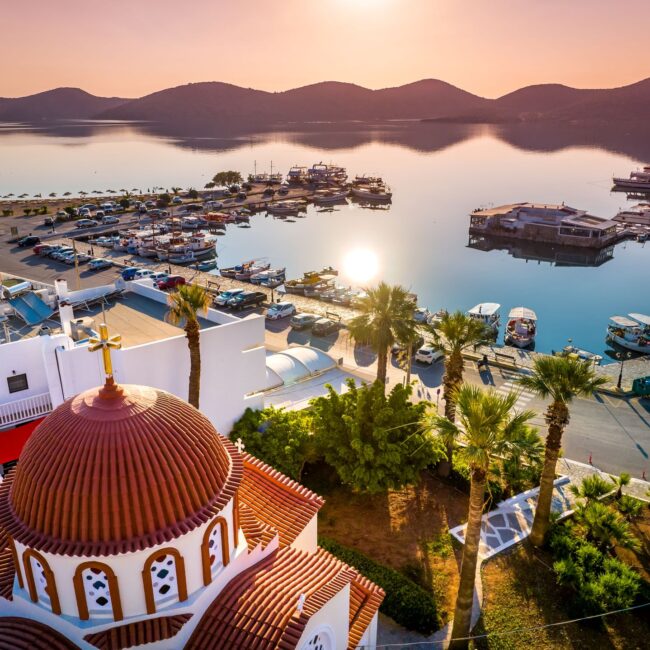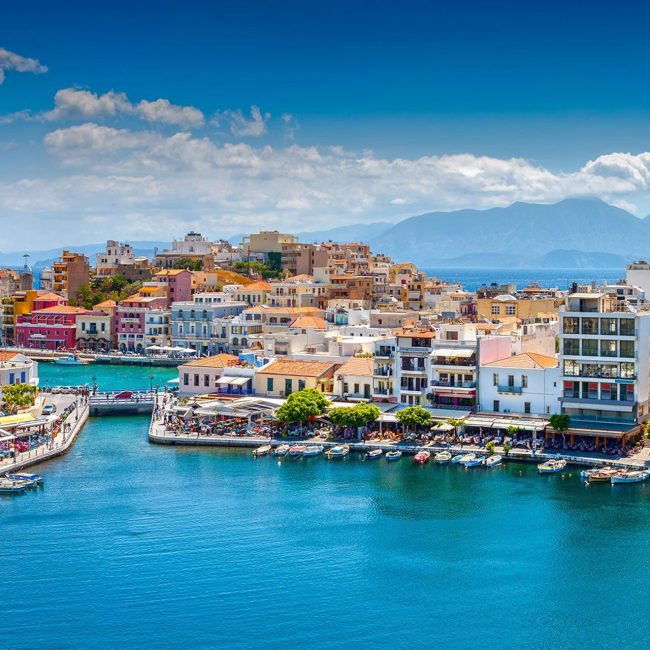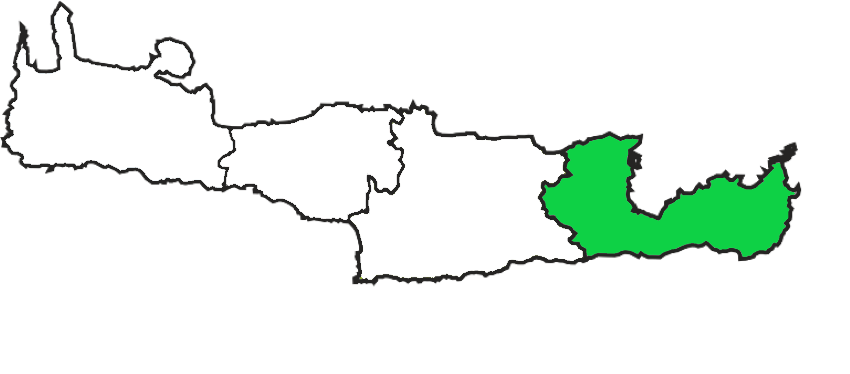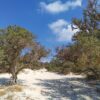Ierapetra
Ierapetra: the southernmost city in Europe
Ierapetra, a captivating town nestled on the southeastern coast of Crete, boasts a rich history, stunning beaches, and a vibrant culture. It is the largest city of the Lassithi district, despite not being the capital of the prefecture, and is the southernmost city in Europe. This “Holy Stone,” as its name translates, offers an unforgettable experience for travelers seeking a perfect blend of relaxation, exploration, and cultural immersion.
The city's history
Ierapetra’s origins date back to the Minoan period, with archeological evidence indicating settlements as early as the third millennium BC.
The town thrived throughout the Doric period (about the 8th century BC), peaking as “Ierapytna” in the Roman era (2nd century BC).
During this time period, impressive public buildings such as a theater and baths were constructed.
Like the Ancient city of Gortyna, Ierapetra joined the Romans and exploited the benefits that came with it.
It became an important commercial hub, having close trading relations with north Africa, Mainland Greece and in extension, the west cities of the Mediterranean. The city’s power grew greatly to the point of minting its own coins.
Following the Roman fall, Ierapetra passed through Byzantine and Arab administrations, but it didn’t receive the same attention as the Romans did, so it started to decline.
Throughout the city, you can find Byzantine walls and Arab inscriptions that show the mark of each culture imprinted in the city.
The Venetians arrived in the 13th century and fortified the town with the majestic “Kale,” a stronghold that still stands today and protects the harbor.
The Ottoman occupation in the 17th century left its stamp on Ierapetra’s architecture, as seen in the picturesque old town with its small lanes and traditional buildings.
Following Greek independence in the nineteenth century, the town grew into a significant agricultural and economic center, a role it still holds today.
A Tapestry of Sights and Experiences
The Venetian Fortress of Kale
Built in the 13th century by the Venetians, the imposing Kale Fortress stands guard over Ierapetra’s harbor. This well-preserved structure served as a defensive stronghold against pirates and invaders throughout the Venetian rule of Crete.
The fortress was destroyed during the Ottoman expansion, but it was rebuilt by them for the same purpose it once held.
Visitors can explore the ramparts, bastions, and other fortifications while enjoying breathtaking panoramic views of the city and coastline. It also hosts cultural events organized by the local municipality.
The Archaeological Collection of Ierapetra
The Archaeological Collection of Ierapetra is housed in the building of an Ottoman school that was built in 1899. Its exhibits cover an extensive period spanning from the Minoan era (3rd millennium BC) to the Roman period (around the 5th century AD). They originate from ancient Hierapytna, a city located at the site of modern Ierapetra, and from archaeological sites around Ierapetra. Visitors can expect to see pottery, sculptures, figurines, coins, and inscriptions that offer a glimpse into daily life, religious practices, and artistic styles of the past.
Timetable & Ticket
Winter Season
In the winter season, all visitors are entitled to a reduced ticket.
Summer season
Closed
25-26th of December
1st of January
25th of March
Tuesdays
Additional Information
Phone number: (+30) 2842028721
Accessibility: There are facilities for the handicapped.
E-mail: efalas@culture.gr
The House of Napoleon
This private residence, currently not open to the public, is locally known as the “House of Napoleon.”
Legend has it that French emperor Napoleon Bonaparte stayed here briefly in 1798 before his campaign in Egypt. However, there’s no historical evidence to support this claim.
Directions: Napoleon 9 street
The Digital Museum of Ierapetra
Located in the former Town Hall building, this museum utilizes technology to showcase Ierapetra’s rich history and cultural heritage.
Interactive exhibits, multimedia presentations, and digital displays allow visitors to explore the city’s archaeological sites, traditional way of life, and local customs in an engaging and informative way.
Directions: Square Kounoupaki 1
Hamidiye Mosque
The Mosque of Ierapetra (Hamidiye Mosque), built in the late 19th century, stands as a reminder of Ottoman influence.
This square building with a unique wooden roof is no longer a functioning mosque, but its well-preserved minaret adds a touch of history to the town square (Plateia Tzami).
Notably, the mosque forms a remarkable complex with the octagonal-domed Ottoman fountain situated southwest of it.
Together, these structures offer a glimpse into the architectural heritage of the Ottoman era in Crete.
Directions: Tzami Square
Religious destinations
Ierapetra, like any city or village in Greece, offers a window into the deep-rooted faith of Crete.
The Cathedral of Agios Georgios (Saint George) is the most important in the city, and the saint is the patron of the city.
The church is three-aisled with a dome and follows the architectural standards of the Turkish occupation, resembling Saint Titus in Heraklion.
The church that stands today was raised in 1856, but in that location there was an older church shown on a map from 1640.
Directions: Saint George 8 Street
The double-aisled church of Jesus Christ our Savior (Afendis Christos) is located close to Ierapetra’s port and the Kales stronghold. It is the city’s oldest temple and is thought to have been built around 1150 AD.
Historical texts speak to a conflict between the city’s Orthodox and Catholic populations, as both doctrines used the temple. The conflict started when Franciscan monk Paul Mudarro decided to take control of the temple for the interests of the Franciscan order, removing the orthodox iconostasis and building a chapel. The dispute was eventually resolved when Francisco Morosini proposed that the new aisle be used exclusively by Catholics and the old by both.
Directions: Stratigou Samouil 10
Notable mentions are the churches of Agia Fotini (Saint Fotini) and Agios Ioannis (Saint John). Both are located in Ierapetra City, close to the coast. Saint John is located in the city center, while Saint Fotini is on the outskirts to the east at the Saint Andreas beach. Also, the monastery of Axion Esti (meaning: worth it) is a picturesque monastery just 2 kilometers north of Ierapetra.
Beyond Ierapetra: Exploring the Environs
Agia Fotia (Holy Fire)
Agia Fotia Beach is located 12 kilometres east of Ierapetra. The town is named after the nearby church, Agia Fotini (or Agia Fotia). It is a little harbor formed at the mouth of a stream that flows from Thripti Mountain.
The beach is well-known and popular among the people of Ierapetra City. It boasts gray sand beaches and crystal-clear blue water. This breathtaking beach, which has been awarded the Blue Flag, boasts crystal-clear waters, fine sand, and stones. It is well-known for its magnificent rock structure and has several surrounding restaurants and options for accommodation. Beach volleyball tournaments have been held at the local court on an annual basis in recent years.
Makry-gialos
Makry-gialos is located 23 kilometres east of Ierapetra. It is a large community near the mouth of the lush Pefki Canyon.
Makry-gialos, which began as a small harbor with no roads in the 1950s, has grown rapidly and is now the region’s major tourist destination.
It is actually made up of two settlements: Makrigialos and Analipsi, which have now been merged. The community has both large and small hotels, pubs, restaurants, bars and cafes, supermarkets, bakeries, ATMs, doctors, and pharmacies.
Apart from the turquoise beaches that the village features, you can find a few remnants of the past, including a Minoan and a Roman Villa.
Mirtos
Myrtos is located 13 kilometers west of Ierapetra, in the impressive Sarakina Gorge. It is a little seaside community that has undergone minor growth in recent years but has remained true to its traditional charm. Myrtos’ beautiful beaches, with their gray sand, have attracted visitors from all over the world. Myrtos offers a variety of services, including accommodation and restaurant options, as well as clinics and pharmacies.
The beach in front of the village is broad and one of the finest in southern Crete, making it ideal for tranquil family vacations. The location is hardly impacted by high winds, and residents claim that Myrtos is the place where the wind never blows. The beach is well-organized, and as you move west, the width of the beach increases and the atmosphere gets more tranquil.
Chrissi Island
Jutting out from the southern shores of Crete like a jewel, Chrissi Island, also known as Gaidouronisi (meaning: donkey island), beckons with unparalleled beauty. This car-free paradise is a favorite among Ierapetra visitors, with frequent boat cruises whisking them away to its shores.
Chrissi boasts captivating diversity on its beaches. Some offer the luxurious feel of pristine white sand, perfect for sinking your toes into, while others present a unique charm with a carpet of colorful, polished seashells. Beyond the beaches, the island boasts unparalleled water clarity, a snorkeler’s dream come true.
Chrissi’s most surprising treasure lies inland – a dense forest of endemic juniper trees (Juniperus macrocarpa). Often referred to as the “Golden Forest” or “cedar woods,” this jewel of the island is the largest natural forest of its kind in the Mediterranean. Explore this enchanting isle and discover its hidden wonders!
Conclusion
Unleash your inner explorer and immerse yourself in the captivating charm of Ierapetra. From sun-drenched beaches and ancient ruins to vibrant culture and delectable cuisine, this southern gem promises an unforgettable adventure. So, pack your bags, lace up your walking shoes, and get ready to discover the magic that awaits in Ierapetra, the Lassithi region’s largest city at the very tip of Europe!
ADDITIONAL TIPS FOR AN ENJOYABLE VISIT TO ierapetra

Destinations near ierapetra
More options for nearby locations to plan your vacations better!


